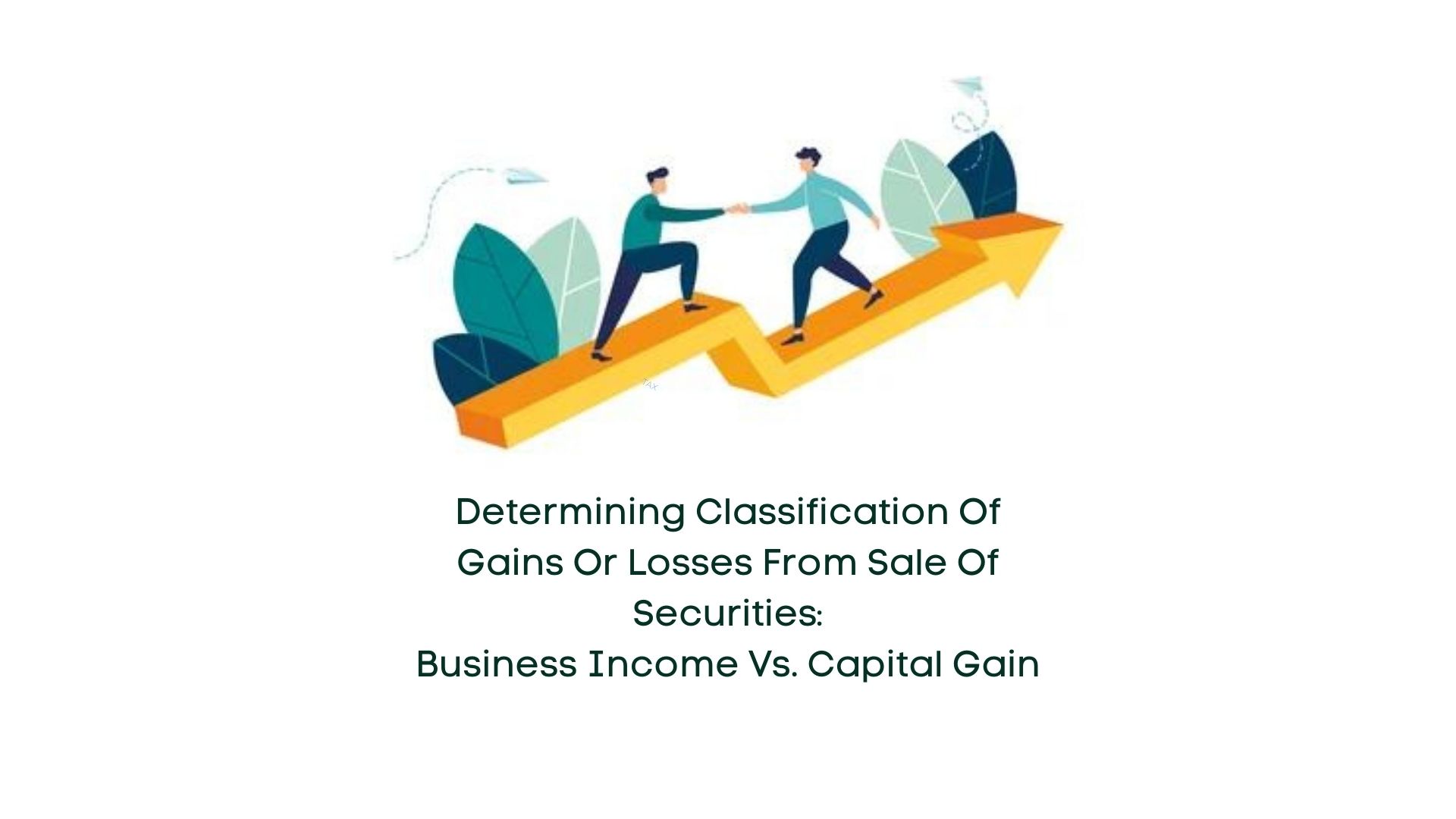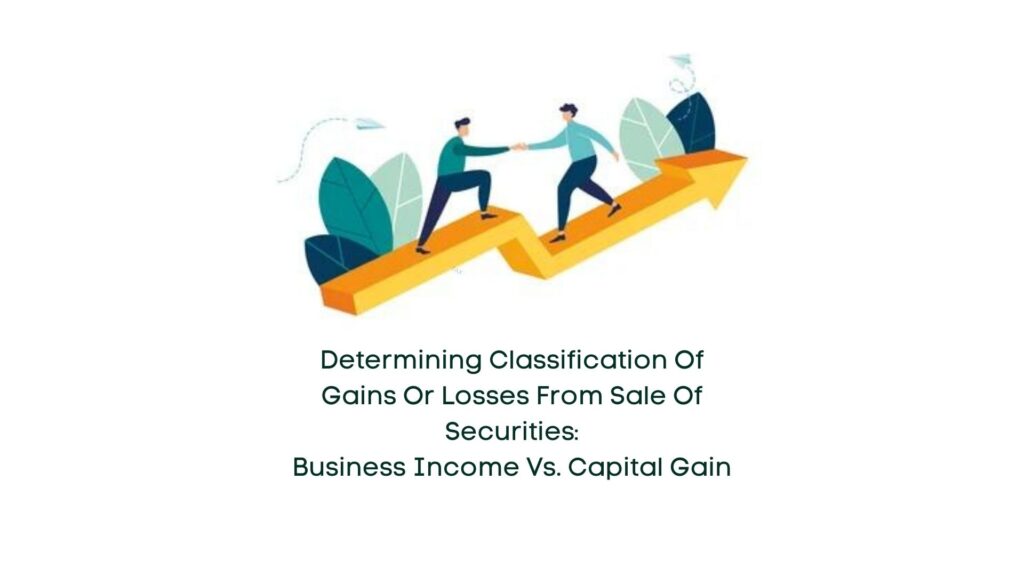
29 Feb Determining Classification of Gains or Losses from Sale of Securities: Business Income vs. Capital Gain

This blog delves into the nuanced understanding of how gains or losses arising from the sale of securities are classified, whether as ‘Business Income’ or ‘Capital Gain’. The key question here revolves around whether an assessee chooses to categorize the sale of securities as income from business, permitting the deduction of related expenses, or as capital gain, where transfer expenses are deductible.
To comprehend the treatment of sales under each head of income, namely ‘Business Income’ and ‘Capital Gain’, it’s essential to explore the varied scenarios.
Various Treatments of Sale of Securities
- Type of Securities Head of Income Rate of Tax
- Equity Shares (Delivery basis) Capital Gain LTCG-10% STCG- 15%
- Equity Mutual Funds Capital Gain LTCG-10% STCG- 15%
- Debt Mutual Funds Capital Gain LTCG-10% without indexation or 20% with indexation STCG- slab rate
- Equity Intraday Business Income Slab rate
- Equity F&O Business Income Slab rate
- Commodity Trading Business Income Slab rate
- Currency Trading Business Income Slab rate
While intraday and derivative transactions are clearly settled as Profit and Gain from Business or Profession (PGBP), the treatment of gains or losses from delivery-based transactions remains debatable, whether categorized as “Income from Business” or ‘Capital Gain’.
As the Income Tax Act doesn’t provide explicit criteria for determining this classification, the issue has been subject to significant litigation. However, the Central Board of Direct Taxes (CBDT) has issued several circulars to streamline this matter, including:
- Instruction No. 1827 dated 31/08/1989, outlining criteria to differentiate between shares held as stock in trade and those held as investment.
- Office Memorandum dated 13/12/2005, which considers various circumstances for Assessing Officers to distinguish between a trader and an investor in stocks.
- Circular No. 4/2007 dated 15/06/2007, which provides tests for differentiating between shares held as stock in trade and those held as investment.
- Circular No. 6/2016 dated 29/02/2016, particularly relevant to listed securities, offering guidelines for assessing the nature of dealing as either income or business income.
These circulars offer crucial insights for taxpayers and authorities alike in determining the appropriate classification of gains or losses from the sale of securities.


No Comments